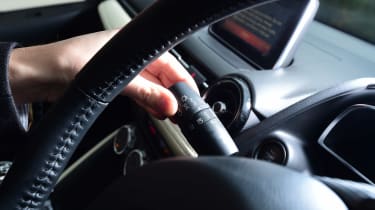A flat battery can be a massive inconvenience, especially on those dark winter nights. However, a flat battery can be avoided by regularly maintaining it, as you would with many other standard car components. A flat battery means that no matter how well you looked after your engine, your car will not start. Cold winter weather has a diverse effect on batteries, slowing down the chemical processes which occur within. In the worst case scenario, there may not be enough current left to crank your engine and start your car.
A flat battery preventing your morning commute is one of worst ways to start a day. So it is sensible to keep your battery in the best possible condition during the cold, dark winter months. Dead batteries are the number one cause of breakdown callouts during the winter here in the UK. Which is the reason we paired up with the RAC and one of its patrol officers Charlie Harding, to create this essential ‘how to avoid a flat car battery’ guide.
• How to change a car battery and choose the right battery for your car
1. Keep driving
Batteries are subjected to peak strain when doing a high number of short journeys, as the engine and alternator are not given enough chance to recharge the battery to its previous state. Try to do some longer journeys to give the car a chance to recharge itself. Alternatively, invest in an external battery charger.

2. Switch off
Modern cars are packed with energy sapping technology, which, if left on, will work to drain the battery very quickly. Lights and heaters are the biggest threats for flattening a battery, however items plugged into a USB or 12V supply will also quickly drain the battery’s charge. Check your interior lights, too – leaving them on overnight could be a costly mistake.
3. Ease the strain
Depressing the clutch when starting the engine can help take the strain off your car. It reduces the effort needed to start, and therefore takes away some of the load on the battery.
4. Check your battery
You can do a visual check every time you lift the bonnet to look for corrosion, but it’s worth getting a professional inspection, too. If you’ve bought a used car, check the manual and make sure the previous owner had the correct battery installed. A new battery could be a worthy investment.
• Best car battery chargers tested
5. Check other battery-related systems
If you’re concerned, get a professional to check over the alternator, starting system and charging systems for the car and battery. If any of these are malfunctioning, it could result in the battery being overcharged, undercharged or in some cases not charged at all – all of which will affect battery life.

6. Service your car
A poorly maintained vehicle can put extra strain on the battery – from underinflated tyres to an overworked engine. And if you have a garage, keep your car in it; warmer temperatures are better for batteries.
7. Know the warning signs
Noises like clicks as you turn the ignition, dashboard lights going dim or the engine turning over very slowly are all signs that a battery is flatter than it should be.
8. Don’t persevere
A battery won’t magically regain charge; if it fails to start the engine, stop trying, as you’ll only flatten it further for no reason. Completely flattening a battery damages it.
9. Safety first
If you’ve conked out in a dangerous place – next to a junction, for example – try to get the car somewhere safer before continuing. See if some passers-by will help push.

10. Be ready to jump start
In an emergency, you may need to jump start the car. Keep a set of jump leads in the boot and learn the procedure.
• How to jump-start your car
Get battery cover with Motoreasy for just £29.99
Next, find out how to check your engine coolant level
Winter driving special


